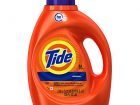A vey passionate winemaker whose wines are some of the best I’ve discovered in recent years just announced that he will be issuing a refund to anyone who bought one of his most recent releases. Why? Because he doesn’t feel the quality is up to the standards he strives for and is committed to making.
Wow!
I’ve been passionate about wine for more than 15 years, beginning my wine adventure just before the first wave of California Cult wines were espoused, and perhaps created, by legendary and controversial wine critic Robert Parker. I quickly found myself on dozens of mailing list of impossible to get cult wines, though I continued to taste and discover the next and the next.
I would also search out the small and passionate producers and winemakers whose wines were made with love, passion and attention to quality yet were small and often off the radar to reviewers at The Wine Advocate or the Wine Spectator. Soon my cellar was crammed with some 2,000 wines. Too many to drink in a lifetime, my friends would say. Nestled next to to the Screaming Eagles, Harlans, and Hillside Selects were Alban’s, T-Vines, Linne Colados, Copains, Andrew Wills, Penner Ashes, Talismans, Corisons, Littorais, Terre Rouges and then some. I searched, tasted wine often and discovered.
That was then.
Then I took off and spent more than three years Tasting Adventure: riding around the world alone on a motorcycle. Funny, but I happened to find my route drifting through wine regions such as the Colchagua and Casablanca valleys of Chile, Mendoza in Argentina, Uruguay, southern Brazil and South Africa and onward. I even discovered bottle capped wines in Ethiopia. My passion for wine followed me as I followed my passion for discovery.
When I returned I looked at what was left of my cellar and realized that while it had a lot of depth, there was little breadth. And chocked with big names from here and from over there, I realized it was time to redicsover what seduced me about wine in the first place. It didn’t take long. That mystery, come hither look of the gentle shoulders and smooth neck of a bottle of wine was the same feeling I got when my fingers gently turned the globe. Curiosity and discovery.
For me, there’s nothing like the feeling of discovering something that touches my senses, tingles my skin and promises to deliver an experience that takes me to new places. Sounds incredible, huh? You know the feeling. Even better, when it’s your little secret. Excited to share it with just those friends who share the passion and appreciation for such an experience.
When I discovered Bedrock Wine Company I had that feeling. That experience. Bedrock’s first “official” release was barely two years ago with the 2007 vintage. Winemaker Morgan Twain-Peterson grew up crawling around cellars, standing on wine barrels and sharing wine with family and friends. His father founded Sonoma County’s Ravenswood Winery, which was sold to Constellation Brands in 2001, about the time Morgan was a sophomore at Vassar College. He ultimately studied and worked at wineries in Australia and Bordeaux, before returning to his home in Sonoma where he hung his shingle and formed Bedrock.
I bought a mixed case of the first vintage of Bedrock wines, including a few heirloom wines. These heirloom wines are from classic old vineyards, most more than 100 years old. Planted by families of some of the first settlers in California, many Italian immigrants, the vineyards are a mishmash of obscure grape varietals, including some that are stumping the best ampelographers at UC Davis and in Bordeaux to identify . Without sophisticated wine making equipment, chemical analysis or new age yeasts, they’d plant a mix of grapes and make a single wine from the vineyard—a field blend. Winemakers today do all the blending in the lab or barrel rooms. The wines were stunning. While I was fascinated and blown away by the heirlooms wines, it was the 2007 Kick Ranch Syrah that stopped my in my tracks.
Working the cellars at Ravenswood, Morgan is no stranger to the notion hard work and passion breeds great things.
Bedrock Wine Company was my little secret. Small production wines crafted with passion and with a commitment to heritage and history by focusing on old vineyards—vineyards that potentially could yield its owners much more money per ton of grapes if they were replanted with Cabernet or Pinot, or the trendy wine du jour. I shared this secret with a select few.
Morgan isn’t shy about his passion and commitment, either. Who else posts on their website a winery’s objective is “To reclaim rose’ from the excesses of saignee and focus on precision, delicacy, aromatics, and food friendliness.â€? Or, “To make fascinating and quixotic white wines from unique sites and interesting varietals.” Or, my favorite: “To dream big but keep production low!â€
Alas, all things must pass.
In mid and late 2010 the wine industry press raved about the wines, including Robert Parker who in September gave every one of Bedrock’s wines tasted scores between 92 and 95 points. My secret was out.
To be sure, once a wine receives such high scores, they sell out quickly. Sometimes scores like this give wineries a license to print money, allowing some to hold high-scoring wines hostage unless customers buy lower rated or less desirable wines. Even worse, a 99 or perfect 100-point score from Robert Parker can see some winemakers join the ranks of the greedy on Wall Street, like John Alban (Alban Vineyards) who after receiving a 100-point score for his 2005 Reva Syrah increased the price of the wine 76% to $167 from the prior years (2004) offering at $95, causing uproar and defection from many of those loyal customers who’d been buying his wines for more than 10 years—long before US wine drinkers warmed up to Rhone-style wines and Parker’s high scores.
Then you have young winemakers like Morgan Twain-Peterson, who told me he will not increase his prices unless his costs increase. And he will do the best he can to continue to offer the wines in reasonable quantity to those who’ve been with him since the beginning—albeit a very short history. After the huge scores were published, most of Bedrock wines sold out in just hours.
His next release, in November 2010, was made up of some small lots from the 2009 vintage, including heirloom wines, pinot noirs, a Sonoma County Syrah and a Russian River Zinfandel. These sold out in a few days by wine buyers waiting with bated breath and palate for the latest from Bedrock. Keep in mind, most of his releases are just a few hundred cases each. I was lucky enough to get a selection of Bedrock’s winter release, but haven’t yet opened a single bottle.
Yesterday Morgan e-mailed me, and everyone else who bought his 2009 Russian River Valley Zinfandel:
Hi Everyone,
After a lot of thought, laboratory testing, and more thought I have decided to issue a refund for the 2009 Russian River Valley Zinfandel. For a number of reasons I can theorize about, the wine in bottle little resembles the wine many people enjoyed out of barrel while tasting at the winery. Though I think the wine will improve in bottle it is not reflective of the standards of quality that I pride myself on keeping at Bedrock Wine Co.. As such, any wine that has not been shipped will stay at the winery and I will be issuing refunds to everyone who purchased the wine via the mailing list. Refunds will be issued over the course of this week and next as I will personally be doing the line-item deletions and refunds from each order, which is a bit time consuming. My apologies for this inconvenience but it is of utmost importance to me that those people who order my wine receive juice that is stellar. […]
My apologies and continued thanks for your support,
Morgan Twain-Peterson
As far as I know, this is a wine industry first: where a winemaker without hesitation unilaterally and unabashedly refunds, to every customer, 100% of the price of a bottle of wine he feels doesn’t reflect “the standards of quality that I pride myself in keeping.” Wow, Morgan! Let’s talk about integrity and passion.
He didn’t have to do this. In fact, I’d bet that most who bought that wine would enjoy it and believe that at $22, the cost on release, would be a good value. In fact, I’ve been in tasting rooms where I’m handed a glass of a corked wine, yet two-thirds of the bottle already consumed. And in the tasting room, people sipping away and most assuredly thinking that’s the way it should taste—as if it’s just the wine.
To be sure, most wineries will replace a corked or tainted bottle someone purchased if brought to their attention. But to broadly contact every buyer and inform them that a refund is coming their way? Never.
Take a look at what happened at Beaulieu Vineyard (BV) in the late 90’s, when Morgan was in high-school. Wine Spectator, along with other winemakers and wine buyers noticed a recurring problem with BV’s expensive cabernets. Writing in the Wine Spectator in late 2002, California wine editor James Laube noticed that BV wines showed “musty flavors, sometimes faint, sometimes overpowering. It was the distinctive character of TCA (2,4,6 trichloroanisole), a flaw usually associated with tainted corks.â€
After a series of blind tastings and laboratory testing by a leading wine analyst, the BV wines showed positive TCA results—in fact, Laube found that all the BV wines tested contained significant levels of TCA. When brought to the attention of BV and Joel Aiken, its winemaker, he admitted that they experienced a higher than average incidence of corky wines.
Further testing by BV revealed that a particular humidified red-wine cellar had registered high TCA levels and was the likely culprit tainting wines stored there.
Even though the wines were noticeably tainted or corked, Laube wrote “the maddening part about TCA taint is that not everyone notices it. BV said it had received only four consumer complaints about corky wines in the past year.â€
But did BV do anything about its discoveries and tainted wines? I’m sure it replaced the wines complained by four of its customers. But for others, it continued to sell and distribute wines it knew were flawed.
What would Morgan Twain-Peterson have done?
Laube summed it up best, writing in the Wine Spectator in December 2002:
“It’s a shame that no one at BV took the flaws in their wines seriously enough to investigate, and that they allow the TCA contamination to linger through at least three vintages. But even if most consumers never notice the TCA in BV’s reds, how the winery deals with the problem now will determine whether or not people embrace their wines in the future.â€
I’m sure other winemakers have let bottles leave their cellars that may not have held up to some level of standards. And others, like Hanzell Vineyards, who suspended sales temporarily when it discovered higher than average TCA levels in some of its wines. No matter what, it’s the winemaker or winery decision that matters. Whichever they choose when releasing a bottle that’s perhaps not up to the quality consistent with the brand or vineyard, I just hope they sleep well at night.
I’m going to open a bottle of that 2009 Bedrock Wine Company Russian River Valley Zinfandel and pour it—blind—alongside some of its high quality zin brethren and see if I can discover anything new. After all, wine is about learning and discovering.
If you’re in the area and want to discover along with me, let me know.
Meanwhile, thanks Morgan. You are the real deal and the industry would certainly be enriched by more like you.
——————————
Editors note: I interviewed Morgan at Bedrock in Septebmer 2010, the interview will be featured in a Podcast here next week. Stay tuned. Subscribe for updates.







